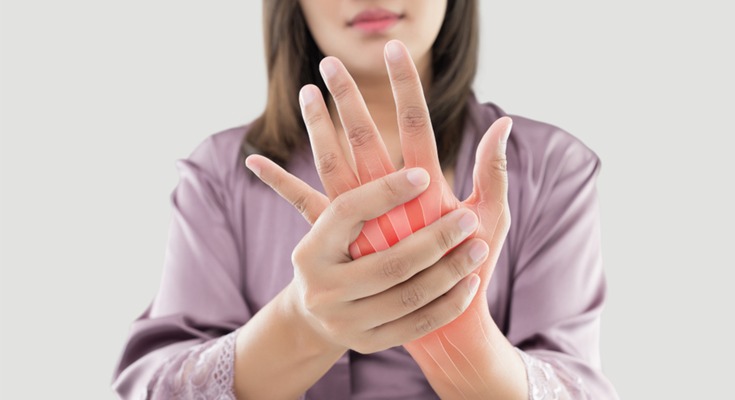The base of your thumb, your knuckles, second joint, and top joint of your fingers are the most commonly affected areas for hand arthritis. Osteoarthritis, rheumatoid arthritis, and psoriatic arthritis are one of the most common types. Arthritis of the hand is pretty common, and it has affected thousands of people every day. The treatment for arthritis of the hand includes splints, medicines, steroid injections, and a change in lifestyle.
In this article, we have listed out everything you need to know about the Arthritis of the hand.
What is Arthritis of the Hand?
Arthritis is a disease that attacks the tissues of your joints, which leads to pain in the joints. A joint is where two bones meet. The disease can easily attack the lining of your joint or the cartilage. The cartilage is the smooth covering that protects your joints. Eventually, the cartilage can break down, and the ends of your bones can become easily exposed, then these joints can rub against each other and wear away, thus leading to the constant pain. You have many joints in your hand, so it’s common for arthritis to happen in your hands.
Arthritis of the hand causes pain and swelling, stiffness, and deformity. As the problem progresses, you can’t use your hands to do day-to-day activities.
Types of Arthritis That Affect Hand
There are many types of arthritis and some of the most common ones.
1. Osteoarthritis: Osteoarthritis is known as degenerative arthritis, and it is the most common type of arthritis. It causes the cartilage that protects your joints to break down and wear away. The unprotected joints tend to rub together without protection, which causes pain stiffness, and loss of movement over time. Osteoarthritis most commonly affects your wrist, joint at the base of your thumb, and near your fingernails. The long-term disease can cause bony lumps to form in the joints of your fingers.
2. Rheumatoid Arthritis: RA is a chronic that causes the joint lining to swell, causing pain, stiffness, and loss of function. A joint’s lining is called Synovium. Your synovium produces the fluid (lubricant) that allows the cartilage to easily slide against each other. Rheumatoid arthritis often affects the same joints of your wrists, hands, and fingers. It usually affects the same joints on both sides of the body.
3. Psoriatic Arthritis: This is a type of arthritis that affects your skin (psoriasis) and joints. Your finger has become swollen. You will also feel joint pain and morning stiffness. In many ways, Rheumatoid arthritis is similar to Psoriatic arthritis. But Psoriatic arthritis will involve several fingers.
What Parts are Mostly Affected by Arthritis of the Hand?
Four areas are impacted by the arthritis of the hand. These include:
- The base of your thumb, where your thumb meets your wrist.
- Your knuckles.
- The middle joints of your fingers.
- The top joint of your fingers nearest your nails.
Symptoms of Arthritis in the Hand?
There are several symptoms of arthritis, and they are different for every person, and the type of arthritis you suffer from:
- Dull or burning joint pain, hours at a time, and it keeps increasing and decreasing
- Moving pain and stiffness in your hands
- Swollen joints in your hands
If you’ve been suffering from arthritis for a long time, then:
- Symptoms are presently more than often
- Pain can change from dull ache to sharp pain
- Pain may wake you up at night
- Pain can easily change how you use your hands
- Tissues surrounding your affected joints can become red and tender to the touch
- You’ll feel grating, cracking, or grinding when you bend your fingers
- Your fingers can’t open and close fully
- The joints of your fingers become large and deformed and abnormally bent
Treatment for Arthritis of the Hand
Your treatment options depend on the type of arthritis you have, the stage of arthritis, and how it impacts your joints. If you have any other existing medical conditions, then the treatment will vary.
The goals of the treatment are to:
- Decrease joint pain and stiffness
- Improved mobility and function
- Increased quality of life
- In the case of rheumatoid or psoriatic arthritis, they need to slow down the progression of the disease
There are several treatment options to choose from, here’s a breakdown of treatments for arthritis of the hand:
1. Splinting/Braces
Splits or braces support and protect the affected joints, reduce deformity, provide joint stability, reduce joint strain, and improve joint alignment. Your healthcare provider or hand therapist will have to discuss splinting/bracing options, and how long you have to wear them.
2. Medications
Your healthcare provider may prescribe medicine to reduce your joint pain, swelling, and to prevent joint damage. Your physician may different drugs based on the severity of your pain. Before you end up taking any over-the-counter medicine, you need to make sure that you cross-check with your healthcare provider. There can be many risks involved in using over-the-counter medicines. Here are some of the most common medications suggested by doctors to those who suffer from arthritis of the hand:
- Acetaminophen: Pain-relieving medicine
- Nonsteroidal anti-inflammatory drugs: These drugs reduce pain and swelling in affected joints. Common exercises are ibuprofen, diclofenac, naproxen, celecoxib.
- Disease-modifying antirheumatic drugs: These drugs slow down the progression of rheumatoid arthritis and relieve symptoms. These include methotrexate, hydroxychloroquine, sulfasalazine, leflunomide.
- Corticosteroids: Taken by mouth, injected into your muscle, or given by IV. These meds are used to reduce inflammation and other symptoms of rheumatoid arthritis. These medicines include prednisolone, prednisone, triamcinolone, and methylprednisolone.
- Immunosuppressive drugs: These slow the progression of rheumatoid arthritis and reduce damage to the bone.
- Biological Agents: These can slow down the joint damage that’s done by rheumatoid arthritis. Some of the common examples of this medicine are adalimumab, etanercept, infliximab, tofacitinib, tocilizumab, and more.

